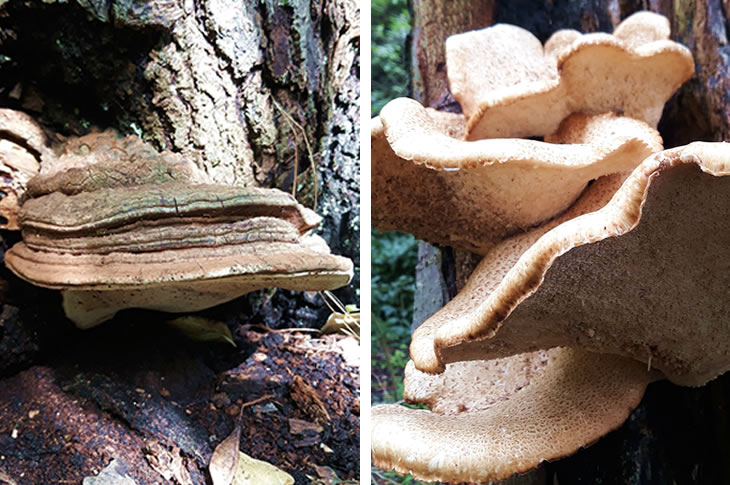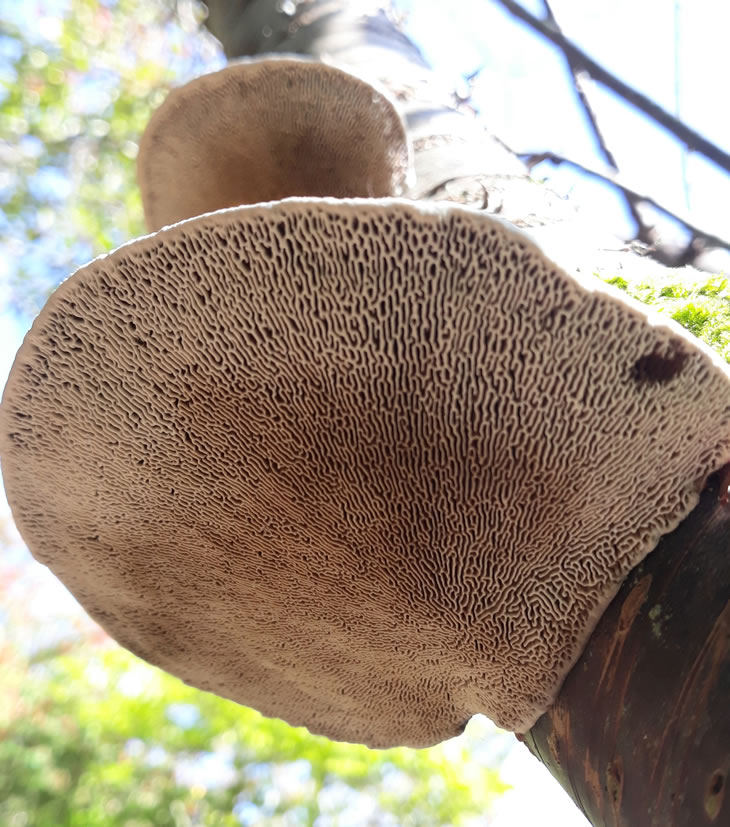An almost audible sigh of relief came from the dry earth on Highdown Hill this week as the first and most appreciable fall of rain we’ve had for what seems like weeks arrived from the sea.
Our parched lawns greened up overnight and we’ll be cutting again in a few days even as growth slows down and we slide into autumn.
The early autumn has brought with it the fruiting of many plants including some of our lower plants the mushrooms and fungi.
The garden is a living collection and of course relies on a vibrant ecology of which fungi are a vital part. Playing a role as nature’s recyclers they break down dead plant material and make available nutrients for uptake by new generations of plants.
However, they don’t always wait for the demise of a plant before beginning their work.
Some trees at Highdown host fungi which are decomposing the dead heart wood held within their lofty boughs and bole.
The pictures below show examples of two common fungi both harmlessly living on the trees dead heart wood, in this case Dryads Saddle (Polyporous squamosus) on one of our red Horse Chestnut’s and a Ganoderma bracket (Ganoderma applanatum/austral) on one of our National Collection trees Cercis racemosa.

Photo: Ganoderma on Cercis (left) and Dryads Saddle on Red Horse Chestnut (right)
The fungi are present all around us as spores in the air and they usually move into the wood of a tree through a wound. There are barriers within the tree to prevent their spread into live wood. Having spent many years as a Tree Officer it’s often this balance between living and dead parts of the tree that is investigated and decisions about the safety of a tree made.
The Cercis here is actually being killed by another much more aggressive Honey Fungus, Armillaria, that will invade and kill living plants and is quite a pest in parks and gardens.
Parts of our collection are particularly prone to its attack including our Cotoneasters, Berberis, and, because the growing conditions on the chalk are so hard, our older Mock Orange, Philadelphus.
The new Heritage Lottery funded Plant Heritage Officer will be tackling this with us by propagating our collection, beginning with those oldest or most at risk plants and working with other plant collection holders to help conserve the stock of these ‘in captivity’ plants. These in turn can assist in global conservation initiatives like the Millennium Seed Bank that provides a safety net for plants that are threatened with extinction.
On our old avenue of Tibetan Cherry the fungi have an interesting maze-like pattern on their lower side, lending themselves to the name of Maze Gills.

Photo: Maze Gill on Cherry